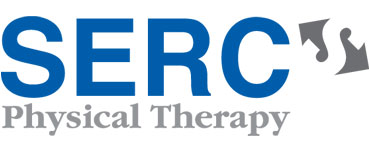Learn More About Ankle Pain
Ankle injuries are a common source of pain, especially among athletes. While these injuries may be common, they can be very debilitating and limit the ability to run, play sports, walk, or even stand to complete every day activities. Injury to the ankle can occur with running, jumping, walking, or even as a result of a fall. Ankle pain can also be a chronic issue, such as with arthritis.
Common Diagnoses of Ankle Pain
- Ankle sprains
- Chronic ankle Instability
- Ankle arthritis
- Tarsal tunnel syndrome
- Peripheral neuropathy
- Achilles tendinitis
- Shin splints
- Total ankle replacements and other surgeries
Symptoms of an Ankle Injury
- Pain
- Swelling
- Instability
- Bruising
- Numbness or tingling
- Burning
- Poor balance
- Stiffness
- Pain with weight bearing activities such as walking or standing
How We Treat Ankle Pain
Recurrence rates for injuries, such as an ankle sprain, have been reported to be as high as 80%. Physical therapy can not only help individuals recover faster , but can also reduce the risk of recurrence for an injury. Receiving early physical therapy intervention can maximize results.
A physical therapist will complete a comprehensive evaluation to determine the underlying cause of your pain and will create a customized program to address your needs. This examination may include screening the entire lower quarter including your spine, hip, and knee as these can often contribute to your pain. Services may include:
- Neuromuscular and balance training
- Flexibility exercises
- Taping
- Manual therapy (Joint or soft tissue mobilization)
- Dry needling
- IASTM
- Strength training
- Endurance training
- Gait training
- Nerve mobilization
- Modalities (Ice, heat, electrical stimulation, ultrasound, etc)
*Services are not available at all locations. Call or click the location page near you for that center’s services.
Dry Needling
Learn MoreInstrument Assisted Soft Tissue Mobilization
Learn MoreManual Therapy
Learn MoreWhat to Expect
Every patient has a unique health history, diagnosis and personal goals. When you come for your first appointment, we will create a personalized treatment plan for you.
We work with most major insurance providers and do our best to help keep the paperwork pain-free. If you’d like to confirm your insurance coverage, please let us know and we can verify when you schedule. If your insurance provider requires a co-pay, we will ask for this payment at each visit. We accept payments by cash, check or credit card.
When to Arrive
On average, a patient’s first visit lasts about an hour. We typically ask patients to arrive 15 minutes early to sign-in, complete paperwork and/or change clothes.
What to Bring
On your first visit, you’ll need to bring your physician referral or prescription (if needed), your insurance card, your primary registration forms, your ID or driver’s license and your co-payment (as applicable). If desired, you may bring a change of clothing.
How it Works
During your first visit, your physical therapist will do an initial evaluation and discuss your plan of care. The therapist uses this information to set goals for your continued treatment. Physical therapy goals may include improved movement, strength, endurance and flexibility, as well as decreased pain. Your subsequent visits will focus on treatment that is based on your diagnosis and individualized goals.

